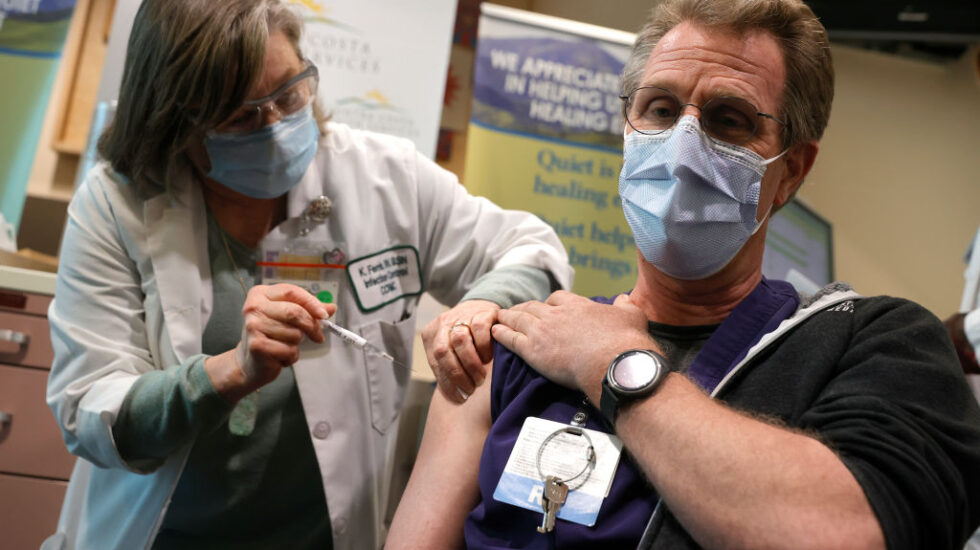No one said it would be easy. And it isn’t.
The sheer logistics of delivering millions of doses of Covid-19 vaccine to hospitals across the United States — and then inoculating millions of Americans — is a daunting task.
U.S. officials hope to get nearly 3 million doses delivered by the end of this week, but it will be months before vaccines can be obtained on demand by the general public.
“What’s tricky is there are so many players involved in getting the vaccine to the population, including the pharmaceutical companies, shippers like UPS and FedEx, state governments, local governments, hospitals, drugstore chains and individual providers,” reports Axios.
“This supply chain is enormously complex, probably more complex than any I’ve seen — and I worked with the defense industry,” said Tim Paydos, a vice president at IBM, which is helping with the logistics planning.
Nothing on such a scale can go perfectly. People make mistakes. Machines break down. A large minority of Americans foolishly refuse to believe the coronavirus is that much of a threat, and only about half tell pollsters they want to be vaccinated.
But with more than 300,000 dead already and more than 3,000 more dying every day in the U.S., the vaccines —one for now, two by next week — simply have to get where they’re needed most, and fast.
The current vaccine, developed by Pfizer and its German partner BioNTech, received emergency-use approval last Friday. A second, similar vaccine from Moderna should be approved before this week is out. Other vaccine candidates are in large-scale trials.
“Inoculations of the newly approved Covid-19 vaccine entered their third day on Wednesday, set aside for doctors, nurses and other frontline medical workers, along with residents and staff of nursing homes,” says the Reuters news agency.
But there was confusion on the front lines of the Covid battle when it became clear that “most long-term care facilities and nursing homes were not taking part in the initial immunizations,” USA Today reported, adding that many such facilities “opted to take part in a federal program that uses pharmacy chains, including CVS, Walgreens and others….”
That means both residents and workers at most nursing homes and long-term care centers will have to wait until next week or even the week after Christmas before they’ll get vaccines, although a few facilities “will start later this week to test the system so it can be scaled up next week,” the newspaper says.
Where vaccinations have begun, like Miami’s public health system, the first frontline health workers to get their shots were celebrated, even as political leaders warned the public that this is not the time to relax.
“Getting complacent doesn’t put ourselves out of the picture, it only puts us more at risk,” said Miami-Dade Mayor Daniella Levine Cava, who has only recently emerged from quarantine after contracting Covid-19.
“So the only way to keep our economy moving is to stop the spread of the disease by taking all the steps, wearing our masks, washing our hands and physical distancing,” Levine Cava told the Miami Herald.
“In Manchester, New Hampshire, intensive care unit nurse Heidi Kukla said she volunteered to get the shot first to help dispel fears about the vaccine’s long-term effects and the speed with which it was developed,” reports the Associated Press.
“I know a lot of people have reservations about getting the vaccine,” she told the AP after getting vaccinated. “But I can assure you that there is absolutely nothing worse than being a patient on a ventilator in an ICU anywhere in this country right now with Covid.”
It’s clear that for most of the country, vaccines will be in short supply for months to come, which underscores still more problems and risks not directly associated with logistics.
They include “everything from cyber and physical attacks to introduction of counterfeit vaccines, diversion of real vaccines to the black market, and mismanagement that leads to spoiled vaccines,” says Axios.
“Plus, there isn’t one vaccine, but rather a number of different ones, each with different requirements in terms of dosing, need for cold storage and other specifics unique to each vaccine.”
And then, of course, there’s politics — and the chasm of denial and disbelief that has opened up in America over the past 10 months, although one Republican leader with good reason to favor vaccinations did take a positive stand: Senate Majority Leader Mitch McConnell.
There’s nothing so clear-cut about the positions of either the president or the president-elect.
“Donald Trump wants credit for a pandemic-defeating vaccine, but is aggrieved Joe Biden won’t give it to him,” Politico reports, adding that Biden’s goal is to promote vaccinations among “wary Americans,” but he’s unlikely to ask Trump to help.
“The result is that even though the country’s two most high-profile leaders both claim to want the same thing — enough vaccinations to eradicate the pandemic — hyperpartisan divisions are preventing them from helping each other achieve that goal,” Politico says.
In other words, political polarization is hampering the country’s ability to fight its biggest public health crisis in a century, even when officials agree on what should happen.
“And the stakes are incredibly high,” Politico says: the U.S. can’t achieve so-called herd immunity against the virus until 70-80% of the total population — roughly 250 million people — has been vaccinated.



